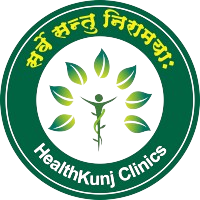What is Homeopathy?
Homeopathy is a holistic system of medicine that has been practiced for over 200 years. Developed by the German physician Samuel Hahnemann in the late 18th century, homeopathy is based on the principle of “like cures like” (similia similibus curentur). This means that a substance that can cause symptoms in a healthy person can be used in minute doses to treat similar symptoms in a sick person. Homeopathy aims to stimulate the body’s natural healing processes, promoting overall health and well-being.
Principles of Homeopathy
The foundation of homeopathy rests on several key principles:
The Law of Similars: This principle posits that a substance that produces symptoms in a healthy person can be used to treat similar symptoms in a diseased state. For example, a remedy made from a plant that causes nausea may be used to treat nausea.
The Law of Infinitesimals: Homeopathic remedies are prepared through a process of serial dilution and succussion (vigorous shaking). This process, known as potentization, is believed to enhance the healing properties of the substance while minimizing its toxic effects. Homeopaths assert that even highly diluted substances can have therapeutic effects.
Individualized Treatment: Homeopathy treats the individual as a whole, considering their physical, emotional, and mental state. Each person’s symptoms and responses are unique, and homeopathic treatment is tailored to the individual’s specific needs.
Holistic Approach: Homeopathy emphasizes the interconnectedness of the body, mind, and spirit. It seeks to address the root cause of illness rather than just alleviating symptoms, promoting overall health and harmony.
How Homeopathic Remedies are Made
Homeopathic remedies are derived from a variety of natural sources, including plants, minerals, and animal products. The preparation process involves several steps:
Selection of the Substance: The initial substance (or mother tincture) is chosen based on its known effects and therapeutic potential.
Dilution: The mother tincture is diluted with alcohol or distilled water. The dilution is typically done in a ratio of 1:10 (D potency) or 1:100 (C potency).
Succussion: After each dilution, the solution is vigorously shaken. This step is believed to imprint the energetic essence of the substance into the diluent.
Repetition: The process of dilution and succussion is repeated multiple times to achieve the desired potency. The final product is then administered in the form of pellets, tablets, liquid drops, or creams.
Common Homeopathic Remedies
There are thousands of homeopathic remedies, each with its unique applications. Some of the most commonly used remedies include:
Arnica Montana: Derived from the mountain daisy, Arnica is used to treat bruises, muscle soreness, and trauma.
Nux Vomica: Sourced from the seeds of the strychnine tree, Nux Vomica is often used to address digestive disorders, headaches, and stress-related symptoms.
Rhus Toxicodendron: Made from poison ivy, this remedy is used for joint pain, arthritis, and skin conditions.
Pulsatilla: Derived from the windflower, Pulsatilla is commonly used for respiratory issues, menstrual irregularities, and emotional imbalances.
Apis Mellifica: Prepared from honeybee venom, Apis is used to treat swelling, insect bites, and allergic reactions.
Homeopathic Consultation Process
A homeopathic consultation is a thorough and detailed process that involves:
Case Taking: The homeopath conducts an in-depth interview to gather comprehensive information about the patient’s symptoms, medical history, lifestyle, and emotional state. This holistic approach helps in understanding the underlying causes of the illness.
Symptom Analysis: The homeopath analyzes the symptoms, considering their nature, intensity, and patterns. This analysis helps in selecting the most appropriate remedy.
Remedy Selection: Based on the collected information, the homeopath chooses a remedy that closely matches the patient’s symptom profile. This remedy is then prescribed in a specific potency and dosage.
Follow-Up: Regular follow-up appointments are scheduled to monitor the patient’s progress and make any necessary adjustments to the treatment plan.
Safety and Efficacy of Homeopathy
Homeopathy is generally considered safe when practiced by qualified professionals. The remedies are highly diluted, reducing the risk of side effects or toxicity. However, it is essential to seek treatment from a licensed homeopath to ensure proper diagnosis and appropriate remedy selection.
Homeopathy in Modern Healthcare
Homeopathy is used to treat a wide range of conditions, including:
- Acute Illnesses: Such as colds, flu, and infections.
- Chronic Conditions: Such as arthritis, asthma, and eczema.
- Mental Health Issues: Such as anxiety, depression, and stress-related disorders.
- Preventive Care: To enhance overall wellness and prevent the onset of illness.
Homeopathy is often integrated into conventional healthcare systems, providing patients with a holistic treatment option that complements traditional medical approaches. Many practitioners, including doctors, naturopaths, and holistic health practitioners, incorporate homeopathy into their practice to offer a more comprehensive approach to patient care.
